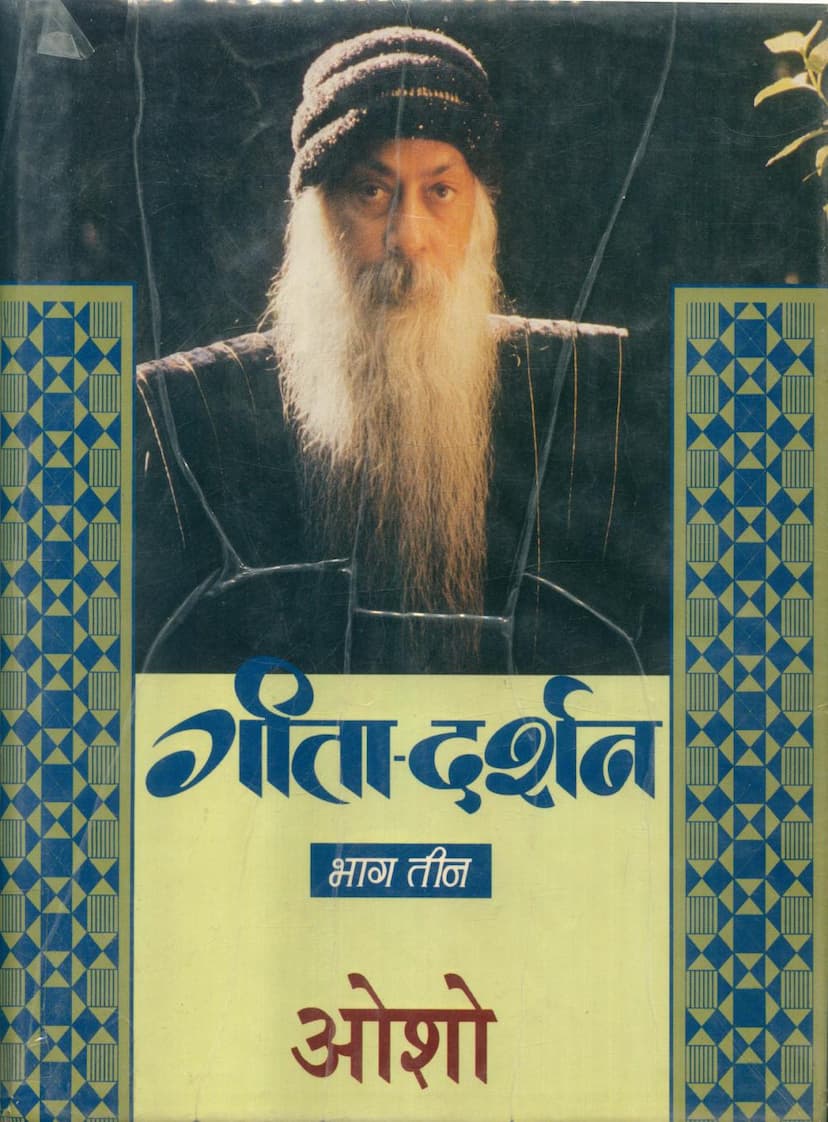Gita Darshan Part 03
Added to library: September 1, 2025

Summary
This is a summary of Osho's commentary on Chapters 6 and 7 of the Bhagavad Gita, titled "Gita Darshan Part 03." The text is a compilation of 31 discourses given by Osho.
Core Theme: Osho's commentary focuses on the transformation of the inner self, emphasizing that true renunciation (sannyas) is not about external abandonment but an internal shift. He highlights the idea of becoming a Yogi while remaining engaged in action, a concept he sees as profoundly difficult yet central to Krishna's message in the Gita.
Key Concepts Discussed:
- Krishna's Unique Renunciation: Osho presents Krishna's concept of renunciation as a radical departure from traditional, escapist views. It's about performing actions without attachment to their fruits, making even a battlefield a stage for spiritual realization. This is portrayed as a revolutionary idea, an "impossible effort" to be both a Buddha and a warrior.
- The Impossibility and Wonder of Krishna's Effort: Osho emphasizes that Krishna's attempts are often seemingly impossible, yet it is these very attempts that bring life's "sparkle" and lead to flowers blooming amidst thorns.
- Chapters 6 & 7: The Core of the Gita: The commentary specifically delves into Chapter 6 (Atma-Sanyam-Yoga - The Yoga of Self-Control) and Chapter 7 (Jnana-Vijnana-Yoga - The Yoga of Knowledge and Wisdom). These chapters are seen as pivotal because they discuss self-control and the nature of knowledge.
- The Nature of Renunciation (Sannyas): Osho contrasts traditional renunciation (renouncing action, home, external forms) with Krishna's concept. He argues that true renunciation lies in renouncing the desire for fruits of action, not action itself. A true renunciate lives without attachment, seeing life as a play or an act.
- The Problem of Desire and Resolution: Osho explains that desires are the root of action and subsequently of suffering. When desires cease, the mind ceases. He connects this to the idea that true renunciation is achieved by letting go of desires, not by suppressing them.
- The Mind as the Root of Suffering: The text highlights that the mind, with its constant choices, desires, aversions, and constant "I"-centric narrative, is the source of suffering. Overcoming the mind, not by fighting it but by understanding and transcending it, is crucial.
- Equanimity (Samatva): The essence of yoga is presented as equanimity – remaining balanced amidst dualities like pleasure and pain, honor and dishonor, success and failure. The mind oscillates between extremes, but true yoga lies in finding the center, the still point between these dualities.
- The Role of Choice (Viklap): Mind is described as "choice." When choice disappears, when one is no longer pulled by opposite forces, one transcends the mind and becomes established in the self.
- The Illusion of Self vs. The True Self: Osho distinguishes between the ego ("I") and the true self. The ego is the accumulation of desires and the constant need to defend and assert itself. True self-awareness arises when the ego dissolves.
- The Science of Inner Travel (Antaryatra): The commentary touches upon the practical aspects of meditation and inner exploration, emphasizing the need for discipline in posture, breath, and sensory focus. He notes that traditional yogic practices have a scientific basis for these techniques.
- The Nature of Knowledge and Wisdom: Chapter 7's focus on "Jnana-Vijnana-Yoga" is explored, differentiating between mere intellectual knowledge (Jnana) and experiential wisdom (Vijnana). True fulfillment comes from the latter.
- The Importance of Inner Stillness: Osho stresses that true peace and spiritual realization are found not by escaping the world but by cultivating inner stillness amidst the chaos of life. The "inner cave" of the heart is the sanctuary where one can truly connect with the divine.
- The Danger of Formulas and Dogma: Osho cautions against rigid adherence to specific paths or rituals, emphasizing that the essence lies in the inner transformation, not the external form. He critiques approaches that are merely intellectual or dogmatic, lacking the experiential core.
- The Transformation of Consciousness: Ultimately, Osho's commentary on these chapters guides the seeker towards a profound transformation of consciousness, where the individual transcends the limitations of the mind, ego, and the external world to realize their true, divine nature.
Overall Tone: Osho's discourse is dynamic, insightful, and often provocative. He uses vivid analogies and contemporary examples to make the ancient wisdom of the Gita accessible and relevant to the modern seeker. He consistently encourages direct experience over mere intellectual understanding.
In essence, "Gita Darshan Part 03" by Osho is an invitation to understand the Bhagavad Gita not as a historical text but as a living guide for inner revolution, urging individuals to find the divine within the midst of their everyday lives, even amidst challenges and conflicts.